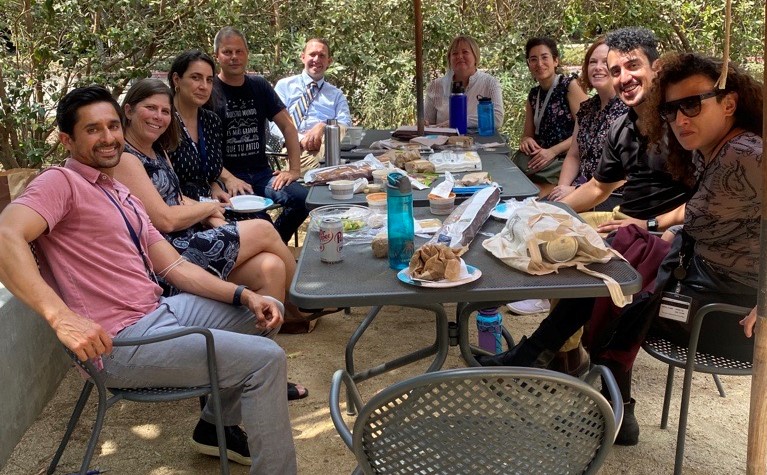Last month Gov. Gavin Newsom dealt the harm reduction community a setback in vetoing a bill that would have created a pathway for safe consumption sites in parts of California. But that hasn’t slowed Health Services’ Harm Reduction division down.
The division, which serves both ODR and Housing for Health, has been hard at work on multiple initiatives to help people who use drugs, are experiencing homelessness, engaged in sex work and/or have justice system involvement. Later this month, the Harm Reduction Steering Committee – a countywide group of service providers, community organizations, advocates, researchers and community members – will reconvene to advise Health Services and DPH-Substance Abuse Prevention and Control on how to advance their work to support people who use drugs, people most vulnerable to drug overdoses, and even death. An independent facilitator will help guide that group’s work.
The committee is also working to build a more inclusive group that draws on the experience of people who use drugs, so harm reduction outreach and services are timely and relevant. “The work that we do needs to be informed by lived experience,” said Program Manager Isabella Rodriguez, who is helping to organize a peer advisory program component.
And as jurisdictions continue to explore options for creating safe consumption sites, Health Services and DPH-SAPC plan to participate in talks with state officials about potential next steps in LA County. Harm Reduction was also recently awarded a $900,000 grant to fund daily drop-in centers in under-resourced communities. They’ll be hubs for harm reduction supplies and other essentials for people experiencing homelessness, including food, water, tents, blankets, undergarments, hygiene support and phone chargers. The centers will also be a central point for connecting people with medical, mental health and other supportive services. The division also plans to provide more training and technical assistance to harm reduction organizations, and to continue distributing naloxone and other harm reduction supplies.
The division is expanding its work across Health Services Community Programs as well by integrating harm reduction strategies into existing work. The group is also fact-finding in the incarceration system to learn firsthand from people in the transgender community about their needs, so that programs and services are tailored and strengthened going forward.

